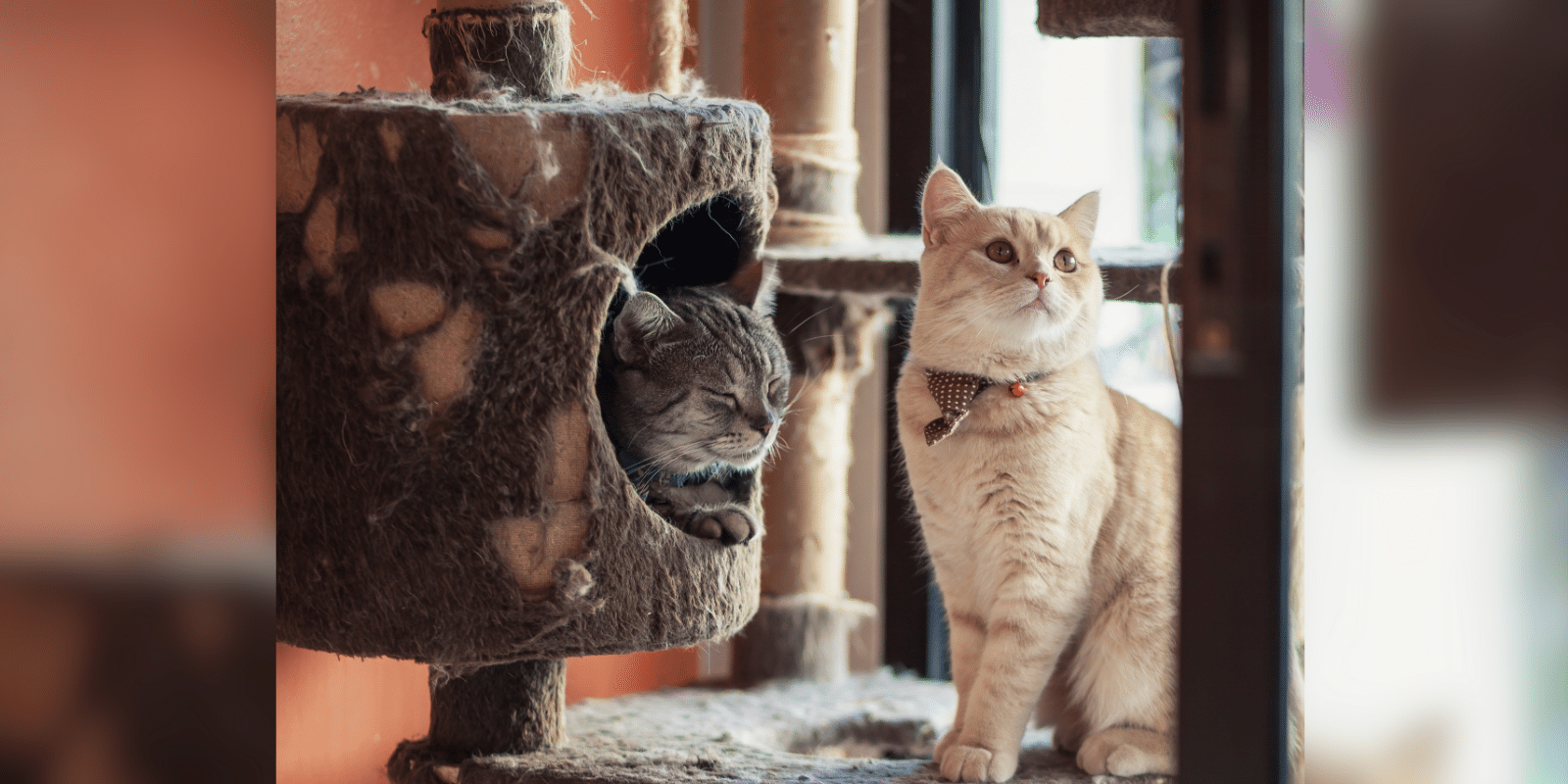As pet owners, we all yearn to understand our furry companions better. However, communication can be challenging since our pets can't speak our language. But don't worry! There are innovative ways to overcome this barrier and create a stronger bond with your beloved pet. In this article, we will delve into unique methods you can use to communicate with your pet, as well as how to decipher how your pet may be trying to talk to you.
Innovative Strategies for Human-Pet Communication
Deepen your connection with your furry family member by exploring these creative communication techniques:
1. Embrace the Power of Scent:
- Our personal scent is unique and comforting to our pets
- Leaving your scent on their toys or bedding can provide a sense of familiarity, making them feel secure in your absence
Dog Example: Have a blanket or towel that you use regularly that you leave with your dog when you're away from home. This helps your dog feel comforted by your familiar scent, reducing anxiety in your absence.
Cat Example: Rub a soft cloth on your cat's favourite resting spot or cat tree, transferring your scent to their environment to create a sense of familiarity and comfort.
2. Master Body Language Cues:
- Learn to interpret your pet's body language to understand their needs and emotions better
- Use clear, consistent gestures to convey your intentions, such as a raised hand for "stop" or a crouching position for "come"
- Avoid sudden movements or aggressive body language to prevent confusion or fear in your pet
Dog Example: When training your dog to "sit," use a clear hand signal, such as raising your palm in front of their face. Over time, your dog will associate the gesture with the command, allowing you to communicate your intent without verbal cues.
Cat Example: To encourage your cat to come towards you, extend your index finger and gently wiggle it, simulating the movement of a curious cat approaching another cat or human.
3. Harness the Potential of Technology:
- Smartphone apps and devices can help you monitor your pet's health, location, and even emotions
- Interactive toys and puzzle feeders encourage mental stimulation and can be controlled remotely to engage with your pet while you're away
- Video calls can provide visual and auditory comfort for your pet, especially if they suffer from separation anxiety
Dog Example: Use a pet camera with two-way audio, allowing you to observe and interact with your dog while you're at work or away from home. You can use the audio feature to soothe your dog with your voice or provide verbal cues for commands they know.
Cat Example: Set up an automatic laser pointer toy that can be controlled remotely via a smartphone app, allowing you to engage your cat in play even when you're not at home. You can also use a laser pointer while you are at home as cats tend to love playing and chasing these. Just be sure to keep it away from their eyes!
4. Soothe with Music:
- Select music with a slow tempo and soft melodies to create a serene environment for your pet
- Observe how your pet reacts to different genres to determine their preferences
- Use music during stressful events, such as car rides or veterinary visits, to provide additional comfort and familiarity
Dog Example: Create a playlist of calming music, such as soft classical or instrumental tracks, and play it for your dog during times of stress, such as during a thunderstorm or when they're left alone. The soothing sounds can help reduce anxiety and create a sense of familiarity and comfort.
Cat Example: Play gentle, soothing music for your cat, such as harp or piano melodies, to help create a calming atmosphere during potentially stressful situations like veterinary visits or moving to a new home.
5. Reinforce Positivity:
- Use treats, praise, and affection to reward your pet for good behaviour
- Be consistent and timely with rewards to ensure your pet associates the positive reinforcement with their actions
- Avoid using punishment as a form of communication, as it can create fear and mistrust in your pet
Dog Example: When teaching your dog to walk calmly on a leash, reward them with treats, praise, or petting each time they maintain a slack leash, reinforcing the desired behaviour.
Cat Example: When teaching your cat to use a scratching post, reward them with treats, praise, or petting each time they use the post instead of scratching furniture. You can also use this for other behaviours you are trying to teach or correct such as not jumping on counters. This positive reinforcement helps your cat associate the scratching post with rewards and encourages continued use.

Decoding Your Pet's Communications
Our pets communicate with us in unique ways. Here's how to decipher their messages:
1. Read Body Language:
- Familiarize yourself with species-specific body language cues
- Recognize subtle signals, such as lip licking or yawning, which may indicate stress or discomfort
- Monitor changes in your pet's behaviour and body language to detect potential health issues or emotional distress early on
Dog Example: A dog that has its ears pinned back and tail tucked between its legs may be experiencing fear or anxiety.
Cat Example: A cat with an arched back and raised fur may be feeling threatened or defensive.
2. Understand Eye Contact:
- Practice making gentle eye contact with your pet to build trust and gauge their comfort level
- Avoid staring contests, especially with unfamiliar animals, as they can escalate tension
- Monitor your pet's pupils for signs of fear, excitement, or arousal
Dog Example: If your dog gazes at you softly with relaxed eyes, they are showing affection and trust.
Cat Example: Alternatively, when your cat slowly blinks at you, it is often referred to as a "kitty kiss," signalling trust and contentment.
3. Decode Vocalizations:
- Pay attention to variations in pitch, volume, and duration of your pet's vocalizations to better understand their messages
- Observe the context in which sounds are made to distinguish between attention-seeking, play, or distress
- Encourage quiet communication, like gentle whines or purrs, to build trust and reduce anxiety in your pet
Dog Example: A dog may whine or whimper when feeling stressed or experiencing pain.
Cat Example: A cat's chattering or chirping noise typically signifies their excitement or frustration, often observed when they spot birds through a window.
4. Value the Power of Touch:
- Learn your pet's preferences for physical contact, such as gentle strokes or vigorous scratches
- Use touch to reinforce positive behaviours or provide comfort during stressful situations
- Respect your pet's boundaries by giving them space to retreat when needed
Dog Example: Some dogs enjoy a gentle belly rub as a sign of trust and bonding.
Cat Example: Many cats prefer head and chin scratches that simulate their self-grooming behaviours and provide comfort.
5. Invest in Training:
- Choose a training method that aligns with your pet's learning style and temperament, such as clicker training, lure-reward training, or shaping techniques
- Be patient and consistent during training sessions, as pets may take time to understand new commands or behaviours
- Celebrate your pet's progress and successes, no matter how small, to keep both of you motivated and engaged in the training process
Dog Example: Teaching your dog the "leave it" command can help prevent them from picking up dangerous objects or eating inappropriate items.
Cat Example: Training your cat to use a scratching post can save your furniture and provide essential enrichment.
6. Engage in Playtime:
- Tailor playtime activities to your pet's interests, age, and physical abilities, ensuring they remain engaged and challenged
- Use playtime to practice training commands or behaviours, reinforcing learning in a fun and relaxed setting
- Rotate toys and games to maintain your pet's interest and prevent boredom, which can lead to destructive behaviours
Dog Example: Interactive toys, like a flirt pole, can satisfy your dog's natural prey drive while promoting physical exercise and mental stimulation.
Cat Example: A feather wand toy can encourage your cat's hunting instincts and provide an engaging play experience.
7. Establish a Routine:
- Gradually introduce a consistent schedule for meals, exercise, and playtime to help your pet feel secure and comfortable
- Stick to the routine as much as possible, even on weekends or during vacations, to maintain stability and predictability for your pet
- Adjust the routine as needed to accommodate changes in your pet's age, health, or lifestyle, ensuring they continue to thrive
Dog Example: Set a routine for your dog by feeding them at the same time each day, taking them for walks at consistent intervals, and scheduling designated playtimes. Here are some other tips for new puppy parents.
Cat Example: Establish a routine by maintaining a consistent feeding schedule, dedicating time for play and enrichment, and setting aside quiet times for rest and relaxation. Here are some other tips for new kitten parents.
In conclusion, effective communication with your pet is crucial for their well-being and for strengthening your bond. By understanding your pet's body language, vocalizations, and needs, you can forge a deeper connection. Embrace these creative communication techniques to cultivate a happier and healthier relationship with your cherished furry companion.




